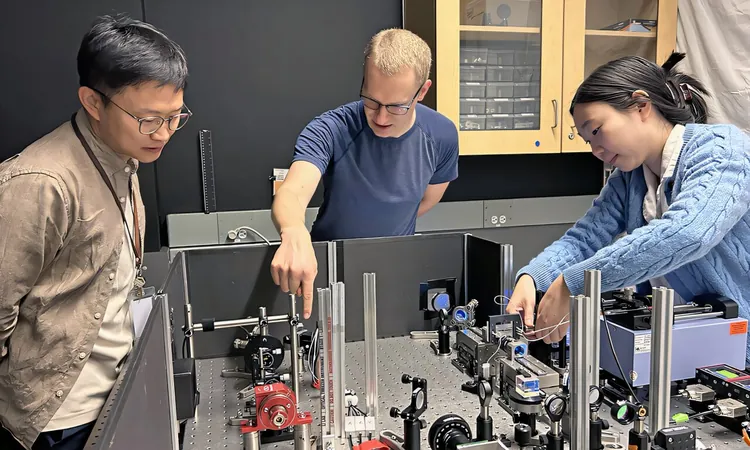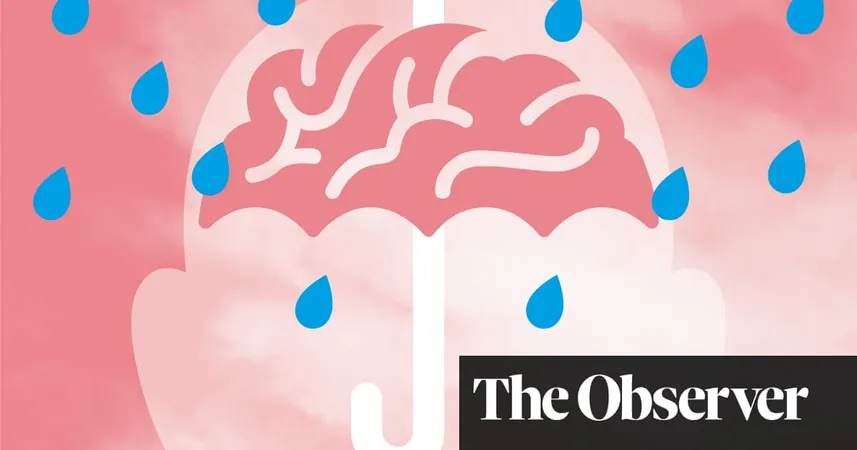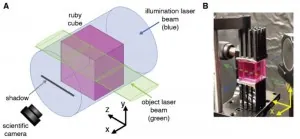
Revolutionary Breakthrough: Scientists Create DNA 'Fish-Hook' System to Mimic Nature's Adhesive Bonds!
2024-11-27
Author: Liam
Groundbreaking Discovery
In a groundbreaking discovery, researchers from UBC Okanagan have successfully engineered an artificial adhesion system that closely replicates the natural biological interactions seen in living organisms. This remarkable innovation could change the future of cell communication and adhesion in both medical and material science contexts.
Leadership and Research Focus
Leading the charge is Dr. Isaac Li and his dedicated team in the Irving K. Barber Faculty of Science, specializing in biophysics at the molecular level. Their research delves into the intricate ways cells interact not only with each other but also with their environments. The implications of this work extend far beyond basic science, aiming to forge new pathways for disease diagnosis and treatment.
The 'Fish-Hook' System
At the heart of this study are two of Dr. Li's doctoral students, Micah Yang and David Bakker, who have ingeniously created a molecule designed to revolutionize our understanding of cellular adhesion. According to Micah Yang, the lead author of the study, all cells possess a natural 'stickiness' that allows them to communicate, merge, and form tissues. However, unlike typical adhesives, which weaken under stress, certain natural adhesive interactions—known as 'catch bonds'—actually strengthen when pulled. This unique property is vital for many essential biological functions.
Innovation and Mechanism
Yang’s groundbreaking innovation hinges on a pair of DNA molecules that mimic the behavior of these catch bonds. Termed the 'fish hook' system, it features two components: the fish, representing one DNA strand, and the hook, representing the other. The interaction between these two strands operates similarly to a fish being caught, forming a robust catch bond. This bond's characteristics can be finely tuned by altering the DNA sequences of both the fish and the hook, allowing researchers to control the bond's strength across various force applications.
Significance of Catch Bonds
'Catch bonds are pivotal in processes such as T-cell receptor function and bacterial adhesion, both crucial for immune responses and the structural integrity of tissues,' explains Yang. 'While nature has refined these interactions over millions of years, replicating their dynamic nature synthetically has posed significant challenges—until now.'
Publication and Future Perspectives
Featured in a recent publication in Nature Communications, their study emphasizes the transformative potential of this DNA-based system. 'The tunability of the fish-hook system marks a substantial improvement over previous artificial catch bonds,' Yang notes. 'Its capacity for precise control gives it tremendous promise in studying biological interactions and creating cutting-edge materials.'
Applications in Various Fields
The potential applications of the fish-hook bond are virtually limitless. In materials science, it could lead to the development of responsive materials that perform better under stress—perfect for future innovations in wearable technology or even aerospace applications where toughness is paramount.
Medical Implications
In the realm of medicine, these artificial adhesion bonds could significantly enhance drug delivery systems and tissue scaffolds, allowing for more sophisticated interactions with cells that mimic natural biological processes.
Conclusion and Future Research
While the path to harnessing artificial adhesion bonds is just beginning, Yang believes this advancement represents a thrilling milestone in the field of biomimetic engineering—an approach that aims to replicate the exquisite efficiency and adaptability of natural systems. This research paves the way for creating materials that not only echo but potentially enhance essential biological processes.
'By mimicking crucial biological interactions like catch bonds, we aren't just uncovering new knowledge about these systems in nature—we're also laying the groundwork for innovative technologies that could greatly improve human lives,' Yang states confidently. As this research unfolds, the scientific community eagerly anticipates the future breakthroughs that may arise from this revolutionary work.









 Brasil (PT)
Brasil (PT)
 Canada (EN)
Canada (EN)
 Chile (ES)
Chile (ES)
 España (ES)
España (ES)
 France (FR)
France (FR)
 Hong Kong (EN)
Hong Kong (EN)
 Italia (IT)
Italia (IT)
 日本 (JA)
日本 (JA)
 Magyarország (HU)
Magyarország (HU)
 Norge (NO)
Norge (NO)
 Polska (PL)
Polska (PL)
 Schweiz (DE)
Schweiz (DE)
 Singapore (EN)
Singapore (EN)
 Sverige (SV)
Sverige (SV)
 Suomi (FI)
Suomi (FI)
 Türkiye (TR)
Türkiye (TR)